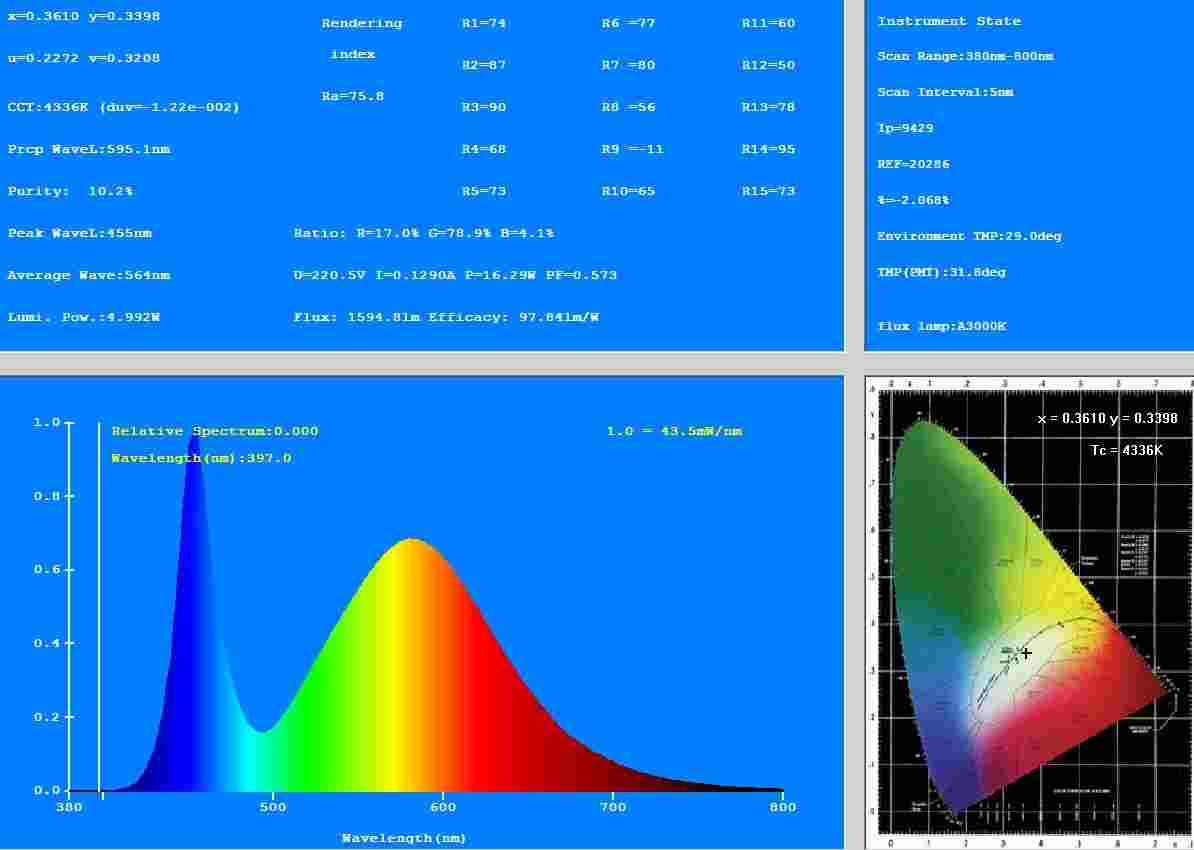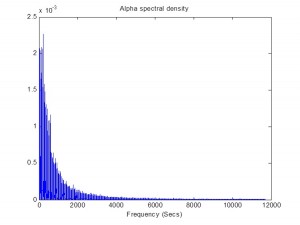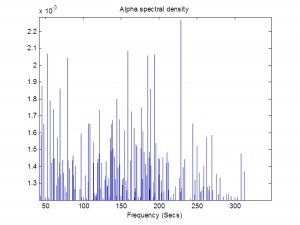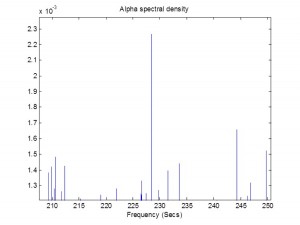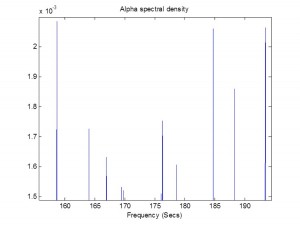One of the questions of interest is the optimal sampling frequency to use for extracting the alpha signal from an alpha generation function. We can use Fourier transforms to help identify the cyclical behavior of the strategy alpha and hence determine the best time-frames for sampling and trading. Typically, these spectral analysis techniques will highlight several different cycle lengths where the alpha signal is strongest.
The spectral density of the combined alpha signals across twelve pairs of stocks is shown in Fig. 1 below. It is clear that the strongest signals occur in the shorter frequencies with cycles of up to several hundred seconds. Focusing on the density within
this time frame, we can identify in Fig. 2 several frequency cycles where the alpha signal appears strongest. These are around 50, 80, 160, 190, and 230 seconds. The cycle with the strongest signal appears to be around 228 secs, as illustrated in Fig. 3. The signals at cycles of 54 & 80 (Fig. 4), and 158 & 185/195 (Fig. 5) secs appear to be of approximately equal strength.
There is some variation in the individual pattern for of the power spectra for each pair, but the findings are broadly comparable, and indicate that strategies should be designed for sampling frequencies at around these time intervals.
Fig. 1 Alpha Power Spectrum
Fig.2
PRINCIPAL COMPONENTS ANALYSIS OF ALPHA POWER SPECTRUM
If we look at the correlation surface of the power spectra of the twelve pairs some clear patterns emerge (see Fig 6):
Focusing on the off-diagonal elements, it is clear that the power spectrum of each pair is perfectly correlated with the power spectrum of its conjugate. So, for instance the power spectrum of the Stock1-Stock3 pair is exactly correlated with the spectrum for its converse, Stock3-Stock1.
But it is also clear that there are many other significant correlations between non-conjugate pairs. For example, the correlation between the power spectra for Stock1-Stock2 vs Stock2-Stock3 is 0.72, while the correlation of the power spectra of Stock1-Stock2 and Stock2-Stock4 is 0.69.
We can further analyze the alpha power spectrum using PCA to expose the underlying factor structure. As shown in Fig. 7, the first two principal components account for around 87% of the variance in the alpha power spectrum, and the first four components account for over 98% of the total variation.
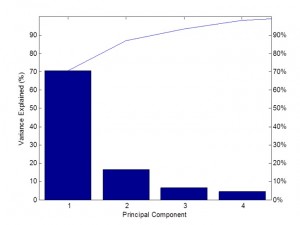
Fig. 7
Stock3 dominates PC-1 with loadings of 0.52 for Stock3-Stock4, 0.64 for Stock3-Stock2, 0.29 for Stock1-Stock3 and 0.26 for Stock4-Stock3. Stock3 is also highly influential in PC-2 with loadings of -0.64 for Stock3-Stock4 and 0.67 for Stock3-Stock2 and again in PC-3 with a loading of -0.60 for Stock3-Stock1. Stock4 plays a major role in the makeup of PC-3, with the highest loading of 0.74 for Stock4-Stock2.
Fig. 8 PCA Analysis of Power Spectra
